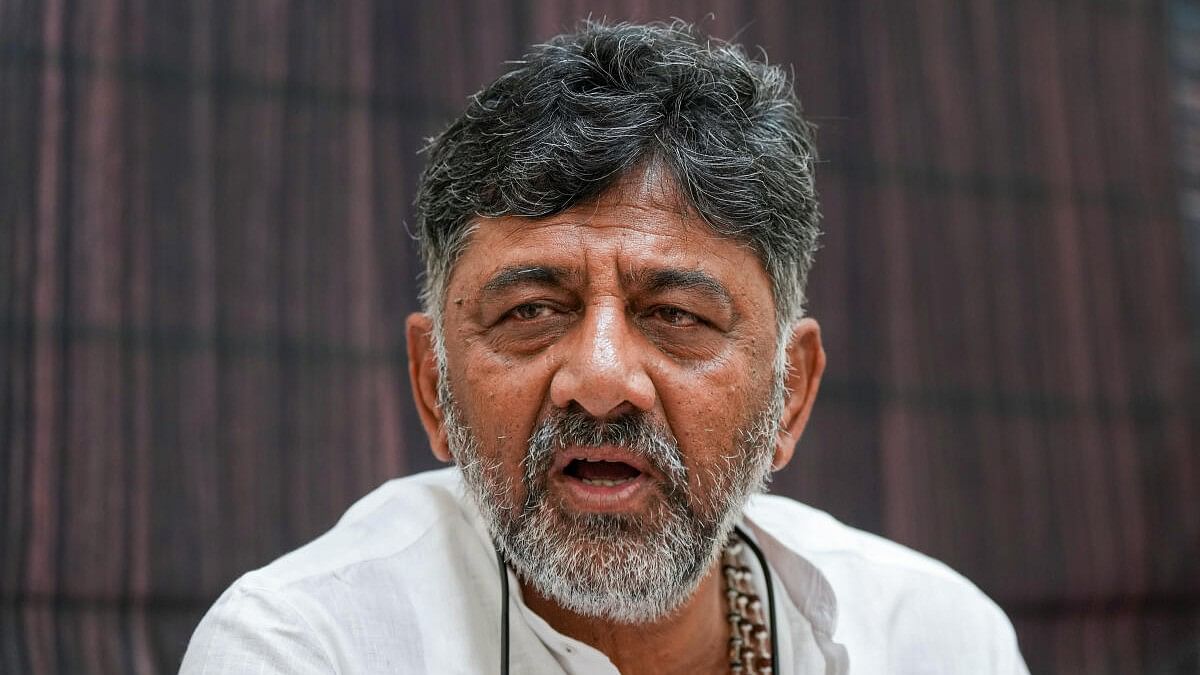
Karnataka Deputy Chief Minister D K Shivakumar.
Credit: PTI Photo
Rain gods have finally smiled on Karnataka soothing the parched lands, streams and rivers yearning for the elixir of life. Mother Cauvery has once again come to life in all her glory. She is brimming with water, giving hopes of prosperity to millions of people in her path and quenching the thirst of the neighboring state as well. It is my good fortune that I have the opportunity to offer the traditional ‘bagina’ to her on behalf of the people of the state.
The people of Cauvery basin, including Bengaluru, were struggling for every drop of drinking water, let alone irrigation water, due to severe drought in the state. Goddess Chamundeshwari has blessed us with copious rains and the smiles are back.
To pay our obeisance to Mother Cauvery, our government, led by Chief Minister Siddaramaiah, will offer bagina on July 29. It is an auspicious occasion for us to be paying respect to our lifelines at Krishna Raja Sagar and Kabini reservoirs.
Cauvery is not just a river for us. She is emotion and she is devotion. Daughter of King Kavera and wife of Agasthya Maharshi, Cauvery took birth in Brahmagiri hills of Kodagu.
Kodavas revere Cauvery as their mother and ‘kula devathe’. Panje Mangesh Rayaru, a well-known poet from Kodagu, has praised her in his poems. Such is the importance of Cauvery that great literary works such as Kaviraja Marga of Sri Vijaya identify Karnataka with her.
Equated with River Ganga, Cauvery is considered to be one of the seven sacred rivers of India. It is a common ritual even today to recite ‘Gangecha Yamunechaiva Godavari Saraswathi, Narmade Sindhu Cauvery, Jalaismin Sannidhim Kuru’ while taking bath.
From Talacauvery in Kodagu to Sri Ranganatha in Srirangapatna and Gajaranya Kshetra at Talakadu to Shilabedhi Kshetra at Shivanasamudra, her path is punctuated by places of great religious significance. There are about 700 temples along her path in Karnataka and Tamil Nadu.
It won’t be a hyperbole to say Cauvery is a blessing for the people of Kodagu, Mandya, Mysuru, Hassan, Bengaluru and surrounding areas.
Legacy of KRS
It was the monumental foresight, determination and effort of Maharaja Nalwadi Krishnaraja Wadiyar, Sir M Visveswaraya and others in Mysuru kingdom which gave birth to Kannambadi or what is popularly known as KRS.
The construction of this reservoir started in 1911 and ended in 1932. More than 10,000 workers sweated it out to build this reservoir.
Nadaprabhu Kempegowda laid the foundation for Bengaluru 500 years ago. He built over 300 lakes to fulfil water needs of the town. As the city grew, the lakes shrank and it was no more water self-sufficient. That is when Cauvery water was pumped to Bengaluru city from a distance of 100 km.
Save water
The recent crisis has demonstrated that every drop of water is precious. Given the uncertainties around climate change, it is our bounden duty to conserve water. Be it for drinking purpose or for irrigation, we need to be mindful of the use of water.
We have decided to organise ‘Cauvery Aarti’ on the lines of ‘Ganga Aarti’ in Varanasi. We believe this is just a small token of our obeisance to Mother Cauvery.
(The writer is KPCC president, Deputy Chief Minister and Minister for Water Resources, Government of Karnataka)